History leaves so much out. It leaves out the most important thing: the detail of what being alive is like. — J. G. Farrell
Sometimes they live in eras and decades that regularized humanity has abandoned … they have come to have a cavalier way with time. What is wrong with that? If regular people are finished with those days and times, why may not others use them?
— R. A. Lafferty
In Jack Finney’s novel Time and Again, an artist named Simon (Si) Morley takes  part in a secret expensive government project to send a person back in time. The idea is that it might just be possible to slip between ages by replicating all aspects of the past. So to get back to a certain point in the 1880s, Si is sent to stay in a room in the Dakota building in New York, furnished for the period, with a view from the window that shows nothing from the modern age. He wears nineteenth-century clothes, reads nineteenth-century books, and when he opens his door in the morning, the experimenters have left the newspaper for that day in 1882 on his mat. Then one day Si opens his door — and walks out into the nineteenth century.
part in a secret expensive government project to send a person back in time. The idea is that it might just be possible to slip between ages by replicating all aspects of the past. So to get back to a certain point in the 1880s, Si is sent to stay in a room in the Dakota building in New York, furnished for the period, with a view from the window that shows nothing from the modern age. He wears nineteenth-century clothes, reads nineteenth-century books, and when he opens his door in the morning, the experimenters have left the newspaper for that day in 1882 on his mat. Then one day Si opens his door — and walks out into the nineteenth century.
The idea that surrounding yourself with things from another period leads to time-slip is really just a concrete expression of what happens when we read books from the past. But the trouble with books is that they’re not three-dimensional. You enter the world of the past, but that world stays inside your mind.
This is where Dennis Severs’ house comes in.
Dennis Severs was a Californian who left the land of palm trees and bright tan landscapes and came to London in the late 1960s.* After giving up on studying law and driving a horse-drawn carriage, in 1979 he bought a derelict eighteenth-century house in Spitalfields, the most poverty-stricken area of historic London. He already knew that he wanted to slip backward in time. So he renovated the house slowly and in keeping with the age. He washed the floors with tea, he acquired the right furniture, he toasted bread on the fire. When I first heard of him in the early ’80s, the house was only partly renovated and he had just started showing people round. As you might guess, I jumped at the chance to visit. You walked through the down-at-heel streets with old burger wrappers blowing around your ankles, past badly kept-up eighteenth-century houses with bare bulbs at their doors, until you came to 18 Folgate Street. There in the cellar window you could see the flickering light of a candle. When I saw the candlelight, I began to get that tingling at the back of the neck that Si Morley must have had when he opened the door in the Dakota that one morning.
In those early days, Dennis Severs had obviously memorized a script, and as he took visitors from room to room he went nervously through his script until someone sidetracked him with a question, when he had to start up again several paragraphs back. But he answered spontaneously when a woman pestered him for bibliography. “But what books did you read?” she said. “You have to read books to know how things work.” He was spluttering with dismay. “I don’t read books,” he said. “I live it.”
I’m sure he did read books, but I’m also sure he lived it. He would talk, for instance, about men’s coats that had elaborate embroidery on the inside — what use could it possibly be for coats to be embroidered on the inside? He’d take a seat on an chair with rolled arms and, still talking, calmly fold the bottom of his coat back over the arms, displaying the embroidery on the inside of the coat. The chair was designed for the coat; the coat was designed for the chair. There’s a reason reading about it isn’t as powerful as seeing it.
The drawing room had a table before the fire— a feature modern design has lost, and which I personally aspire to. Severs talked about how people would play cards at the table, and a little scrap of fur would be hung under the table. As the people played, fleas would jump off the people and onto the tempting scrap of fur. At the end of the evening the host would throw the scrap into the fire. A flea-catcher — ingenious! And under the table at 18 Folgate Street there hung a scrap of fur. As far as I’m aware, real fleas were not supplied, but you never know.
Severs invented a family who had lived at 18 Folgate Street, the Jervises, Huguenot weavers who had immigrated from France. French weavers were abundant in Spitalfields, and the Jervises were a realistic invention. As you moved higher in the house, which has five stories, the Jervises got more prosperous. Mr. Jervis’s wig-powdering corner was in one room, where Dennis powdered his own wigs. The idea was that the Jervises had left each room just before you entered. When you walked in, the beds were mussed, the tea
was hot, the bread crusts were still on the plates. And this was not just stage-management with fake props, because it was genuinely Dennis’s bed, Dennis’s tea, and Dennis’s crusts. The house was genuinely lived in, halfway in the eighteenth century and halfway in the twentieth.
I went back to the house throughout the 1980s as renovations proceeded and Dennis Severs’ presentations become more assured (and less patient with visitors who demanded bibliography). At a certain point he acquired a footman. Pretty much every scrap of social history I know, I learned at Dennis Severs’ house. (The rest of it I learned from the astoundingly well-informed guides at Mary Arden’s house outside Stratford. Ask them someday about smocks or windows.)`
At Dennis Severs’ house, we would all go down to the servants’ sitting room — a dank, low room with an uneven brick floor and a small fireplace — and sit while Dennis Severs told us stories. He mentioned that Spitalfields comes from St. Mary’s Hospital fields. As the fire burned, he mentioned that such was the danger from fires in earlier eras that there were laws specifying the time they should be banked or put out: the couvre-feu (cover-fire), or curfew.
This past winter I taught a course in London on the rich and their servants. We read a lot of good stuff, including Margaret Powell’s spirited memoir of being a servant, Below Stairs. (It was this book that inspired Upstairs, Downstairs and Downton Abbey.) But one of the students told me that she never really got it about servants until she saw the servants’ sitting room in Dennis Severs’ house.
One of the joys of the house is that not everything is tidy. Going into conventional historic house museums, you’d think everyone in the past lived waiting for House Beautiful to come round and take photos. In Dennis Severs’ house, beds might be unmade and things jumbled on the bureaux. The house smells like a house. It is not antiseptic. The light is real. There are the clip-clops of horses outside the window. Surely those are real too? Is time beginning to slip?
The New York Times wrote about Dennis Severs’ house, “Historical accuracy was no more important to his presentation than it would be in a lowbrow historical novel.” I wish I could get hold of this writer and shake him. For one thing, in terms of furnishings, renovation, and upkeep, it is accurate. And in terms of experience, even more so. As another maverick would say, “Facts do not illuminate. The Manhattan phone directory has four million entries which are factually correct, but as a book it doesn’t really illuminate you.” Send the New York Times critic to me, and we’ll have a talk.
But the other joy about the house is its playfulness. If you peer carefully at a shelf you’ll see a miniature tableau from a Beatrix Potter book. There’s a drama going on about Mrs Jervis, and clues are here and there. Mischievous invitations are found on mantels and bulletin boards. Another room features a Hogarth painting of mayhem at a card party,
and when you look around the room, you realize it is the room in the painting, mayhem intact. Up in the attic, where a Dickensian poverty has begun to reign, Marley’s chain hangs beside the door. In one bedroom is an eighteenth-century engraving of a domestic scene. The caption says “YOU ARE HERE-ISH.”
“I’m going to bombard your senses,” Dennis Severs said in an interview. “I will get the 20th century out of your eyes, ears and everything.” The Guardian said it was as if you are transported into a dream. David Hockney described the house as one of the world’s greatest works of opera.
Dennis Severs said, “You either get it or you don’t.”
Dennis Severs died on December 27, 1999 — on the brink of the new century — at the age of 51, from cancer related to AIDS. There was initially great worry about whether the house could continue as it was. Finally it was saved, and visitors are still welcome, although there is no longer anyone to narrate the way through the house. So the fur scraps, the embroidered coat, and the couvre-feu are no longer explained to visitors. But the house is still used, so that when you enter the room and there is still tea in the tea cup, it is not staged tea — it really was someone’s tea. The house still shows that the Jervises were in the room only a moment before. And now, in a very real sense, the house also shows that Dennis Severs was in the room only a moment before. Christopher Wren’s epitaph might also apply to him: “If you seek his monument, look around you.” He has slipped wholly into the past. For the rest of us, 18 Folgate Street is still there for anyone who wants to try the door.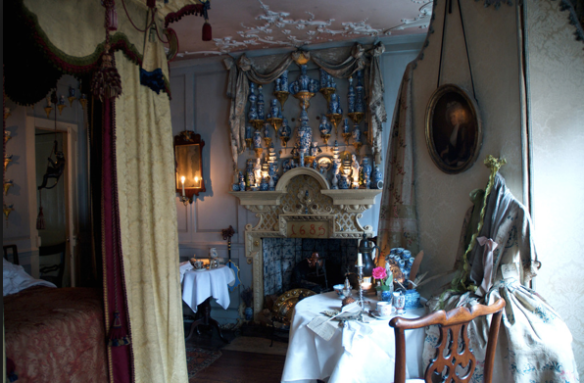
* His name is pronounced “Seevers,” not “Sehvers.” No one believes me on this. I know because I embarrassingly pronounced it the wrong way to the man himself. Go ahead, ask one of the people who shows you around the house. They’ll tell you: Seevers.
The website for the Dennis Severs’ house, 18 Folgate Street, with visitor information: http://www.dennissevershouse.co.uk/
The Guardian obituary: http://www.guardian.co.uk/news/2000/jan/10/guardianobituaries
The New York Times obituary: http://www.nytimes.com/2000/01/31/world/dennis-severs-who-lodged-london-s-ghosts-dies-at-51.html
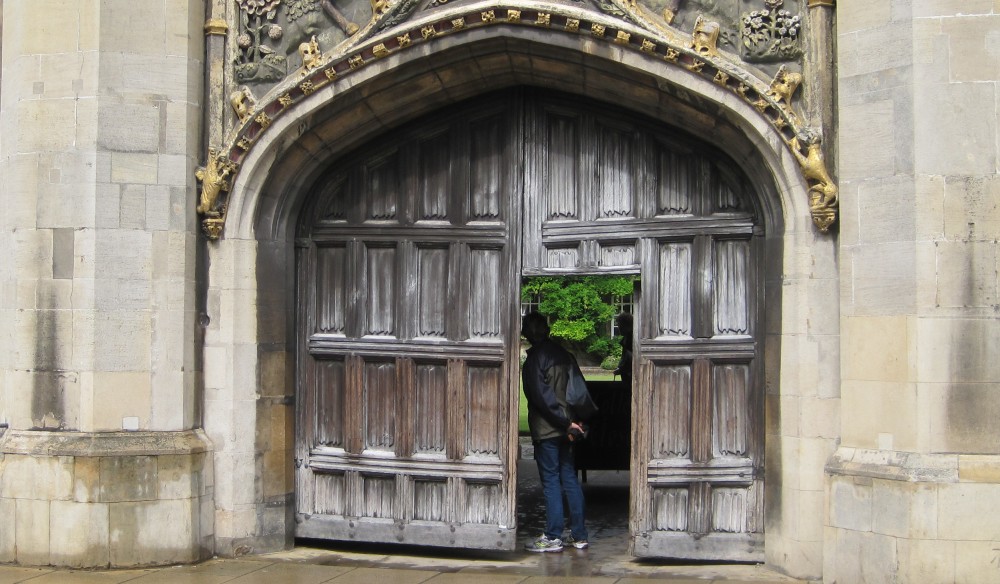
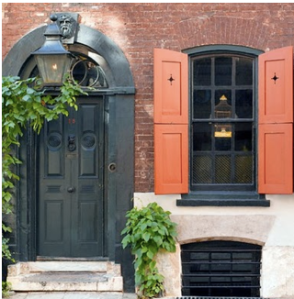
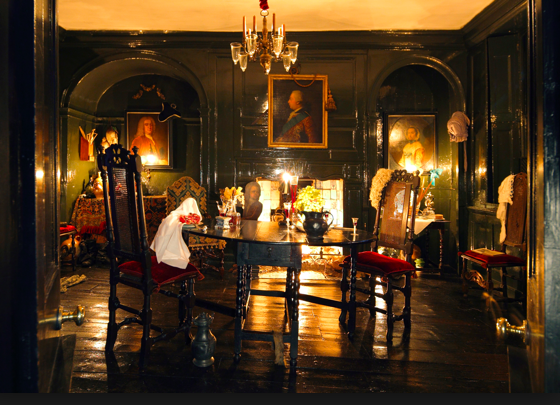
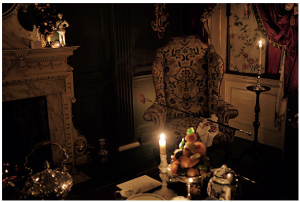
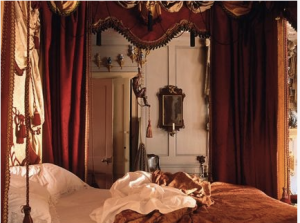
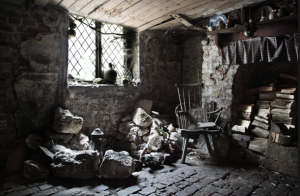
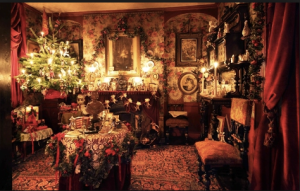

Loved your account. You write so well.
Judy Q
Good to discover this account of the Dennis I remember….. He would have so approved of your comments on the New York Times!
– The Footman